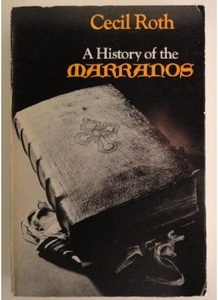NAMES ANALYSIS REPORT
You searched for:"Nieto",
Here's what we found
The English meaning of Nieto is Grandson.
The name Nieto is of Spanish origin.
There are many indicators that the name Nieto may be of Jewish origin, emanating from the Jewish communities of Spain and Portugal.
When the Romans conquered the Jewish nation in 70 CE, much of the Jewish population was sent into exile throughout the Roman Empire. Many were sent to the Iberian Peninsula. The approximately 750,000 Jews living in Spain in the year 1492 were banished from the country by royal decree of Ferdinand and Isabella. The Jews of Portugal, were banished several years later. Reprieve from the banishment decrees was promised to those Jews who converted to Catholicism. Though some converted by choice, most of these New-Christian converts were called CONVERSOS or MARRANOS (a derogatory term for converts meaning pigs in Spanish), ANUSIM (meaning "coerced ones" in Hebrew) and CRYPTO-JEWS, as they secretly continued to practice the tenets of the Jewish faith.
Our research has found that the family name Nieto is cited with respect to Jews & Crypto-Jews in at least 15 bibliographical, documentary, or electronic references:
Finding Our Fathers: A Guidebook to Jewish Genealogy, by Dan Rottenberg
In this work Dan Rottenberg shows how to do a successful search for probing the memories of living relatives, by examining marriage licenses, gravestones, ship passenger lists, naturalization records, birth and death certificates, and other public documents, and by looking for clues in family traditions and customs. Supplementing the "how to" instructions is a guide to some 8,000 Jewish family names, giving the origins of the names, sources of information about each family, and the names of related families whose histories have been recorded. Other features included a country-by-country guide to tracing Jewish ancestors abroad, a list of Jewish family history books, and a guide to researching genealogy.
From the records of Bevis Marks, The Spanish and Portuguese Congregation of London
Bevis Marks is the Sephardic synagogue in London. It is over 300 years old and is the oldest still in use in Britain.The Spanish and Portuguese Jews' Congregation of London has published several volumes of its records: they can be found in libraries such as the Cambridge University Library or the London Metropolitan Archive
History of the Jews in Venice, by Cecil Roth
In this work, Cecil Roth covers the long course of Italian-Jewish history extending from pre-Christian times, comprising in a degree every facet of the evolution of Jewish life in Europe. Contains a huge store of facts tracing regional variations over a period of 2000 years.
Finding Our Fathers: A Guidebook to Jewish Genealogy, by Dan Rottenberg
In this work Dan Rottenberg shows how to do a successful search for probing the memories of living relatives, by examining marriage licenses, gravestones, ship passenger lists, naturalization records, birth and death certificates, and other public documents, and by looking for clues in family traditions and customs. Supplementing the "how to" instructions is a guide to some 8,000 Jewish family names, giving the origins of the names, sources of information about each family, and the names of related families whose histories have been recorded. Other features included a country-by-country guide to tracing Jewish ancestors abroad, a list of Jewish family history books, and a guide to researching genealogy.
The Inquisitors and the Jews in the New World, by Seymour B. Liebman. Reports the names of people who appeared before the inquisition in the New Spain
Except for a brief introduction, the entire book is a listing of Inquisition Records in the New World. This is a source for converso names in the New World.
A History of the Marranos, by Cecil Roth.
The expulsion of the Jews from Spain in 1492 by the infamous decree of King Ferdinand and Queen Isabella was the culmination of a series of anti-Jewish persecutions throughout the 14th and 15th centuries in which thousands of Jews were massacred. Thousands of others converted in order to escape death. After the expulsion many more joined the ranks of these "new Christians" as an alternative to exile. A large number of converts, while outwardly professing Christianity, secretly continued to practice Judaism. These Marranos, as they were popularly known, were then mercilessly persecuted by the dreaded Inquisition which through tortures of forced confessions and auto-da-fes sent thousands to the stake. Many others managed to escape to countries outside the reach of the Inquisition where they created a widespread Marrano diaspora. Thousands of Marranos have survived even into our times. This seminal work by the eminent historian traces the tribulation of these secret Judaizers as well as the fate of those who succeeded in escaping to other lands where many of them rose to prominence in various fields of endeavor.
From the publication, "Los Sefardíes" (The Sephardim),by Jose M. Estrugo. Published by Editorial Lex La Habana, 1958.(Surnames common among the Sephardim)
When the Romans conquered the Jewish nation in 70 CE, much of the Jewish population was sent into exile throughout the Roman Empire. Many were sent to the Iberian peninsula. The area became known by the Hebrew word "Sepharad". The JEWS in SPAIN and PORTUGAL became known as "Sephardim" or and those things associated with the SEPHARDIM including names, customs, genealogy and religious rituals, became known as SEPHARDIC.
The Sephardim of England, by Albert M. Hyamson
A history of the Spanish & Portugese Jewish Community, 1492-1951.
A Life of Menasseh Ben Israel,by Cecil Roth.
This book contains names from the Sephardic community of greater Amsterdam. Amsterdam was a major haven and transfer point for Sephardim and Crypto-Jews leaving Iberia.
Crisis and Creativity in the Sephardic World: 1391-1648,edited by Gampel.
This book explores antecedents,causes, mechanics and aftermath of the 1492 expulsion from Spain and lists Sephardic movers and shakers during the period.
Sangre Judia (Jewish Blood) by Pere Bonnin. Flor de Viento, Barcelona, 2006. A list of 3,500 names used by Jews, or assigned to Jews by the Holy Office (la Santo Oficio) of Spain. The list is a result of a census of Jewish communities of Spain by the Catholic Church and as found in Inquisition records.
Pere Bonnin, a philosopher, journalist and writer from Sa Pobla (Mallorca), a descendant of converted Jews, settles with this work a debt "owed to his ancestors", in his own words. The book, written in a personal and accessible style and based on numerous sources, includes a review of basic Jewish concepts, Jewish history in Spain, and Christian Anti-Semitism. There is also a section that focuses on the reconciliation between the Church and Monarchy and the Jews, which took place in the 20th Century. In this study, Bonnin deals in depth with the issue of surnames of Jewish origin. In the prologue, the author explains the rules he followed in the phonetic transcription of surnames of Hebrew origin that are mentioned in the book. The researcher cites the Jewish origin, sometimes recognized and other times controversial, of historically prominent figures (like Cristobal Colon, Hernan Cortes, Miguel de Cervantes Saavedra and many others) and links between surnames of Jewish origin with some concepts in Judaism.. The book also includes an appendix with more than three thousands surnames "suspected" of being Jewish, because they appear in censuses of the Jewish communities and on the Inquisitorial lists of suspected practitioners of Judaism, as well as in other sources. In the chapter "Una historia de desencuentro", the author elaborates on surnames of Jewish origin of the royalty, nobility, artistocracy, clergy, and also of writers, educators and university teachers during the Inquisition. Special attention is given to the "Chuetas" of Mallorca, the birthplace of the author.
Noble Families Among The Sephardic Jews, by Isaac Da Costa, Bertram Brewster, and Cecil Roth.
This book provides genealogy information about many of the more famous Sephardic families of Iberia, England and Amsterdam. It documents the assimilation, name changes and conversion of many Sephardic families in Spain, England and The Netherlands. There is a large section dealing with the genealogy of the members of Capadose and Silva families in Spain and Portugal. This reference includes genealogical tables and a translation of Da Costa’s 1850 work "Israel and the Gentiles", with chapters by Bertram Brewster on the Capadose conversion to Christianity and by Cecil Roth on their Jewish history.
The Circumcision Register of Isaac and Abraham De Paiba (1715-1775) from the Archives of the Spanish and Portuguese Jews' Congregation of Bevis Marks (London. England).
This register is from the manuscript record preserved in the Archives of the Spanish and Portuguese Jews' Congregation of London named "Sahar Asamaim" transcribed, translated and edited by the late R.D. Barnett, with the assistance of Alan Rose, I.D. Duque and others; There is also a supplement with a record of circumcisions 1679-1699, marriages 1679-1689 and some female births 1679-1699, compiled by Miriam Rodrigues-Pereira. The register includes surnames of those circumsized as well as the names of their Godfathers & Godmothers.
Ruth Reyes, "Sephardic Family Names from Puerto Rico", The Casa Shalom Journal, Volume 10, Published by The Institute for Marrano-Anusim Studies, Gan Yavneh, Israel 2008
This list is compiled from a catalogue the author found on a visit to Puerto Rico in the Museum of San Juan.
The Abarbanel Foundation Website, "Reintegrating the Lost Jews of Spain & Portugal"
List of names of forcibly converted Jews who were tried by the Spanish Inquisition for practicing Judaism in Mexico in the years 1528 - 1815
Around the 12th century, surnames started to become common in Iberia. In Spain, where Arab-Jewish influence was significant, these new names retained their old original structure, so that many of the Jewish surnames were of Hebrew derivation. Others were directly related to geographical locations and were acquired due to the forced wanderings caused by exile and persecution. Other family names were a result of conversion, when the family accepted the name of their Christian sponsor. In many cases, the Portuguese Jews bear surnames of pure Iberian/Christian origin. Many names have been changed in the course of migration from country to country. In yet other cases "aliases", or totally new names, were adopted due to fear of persecution by the Inquisition.
Some common variations of Nieto are Netto, Nietto, Neto,
The following websites are relevant to the surname Nieto:
http://www.cryptojews.com/Lazo.html












